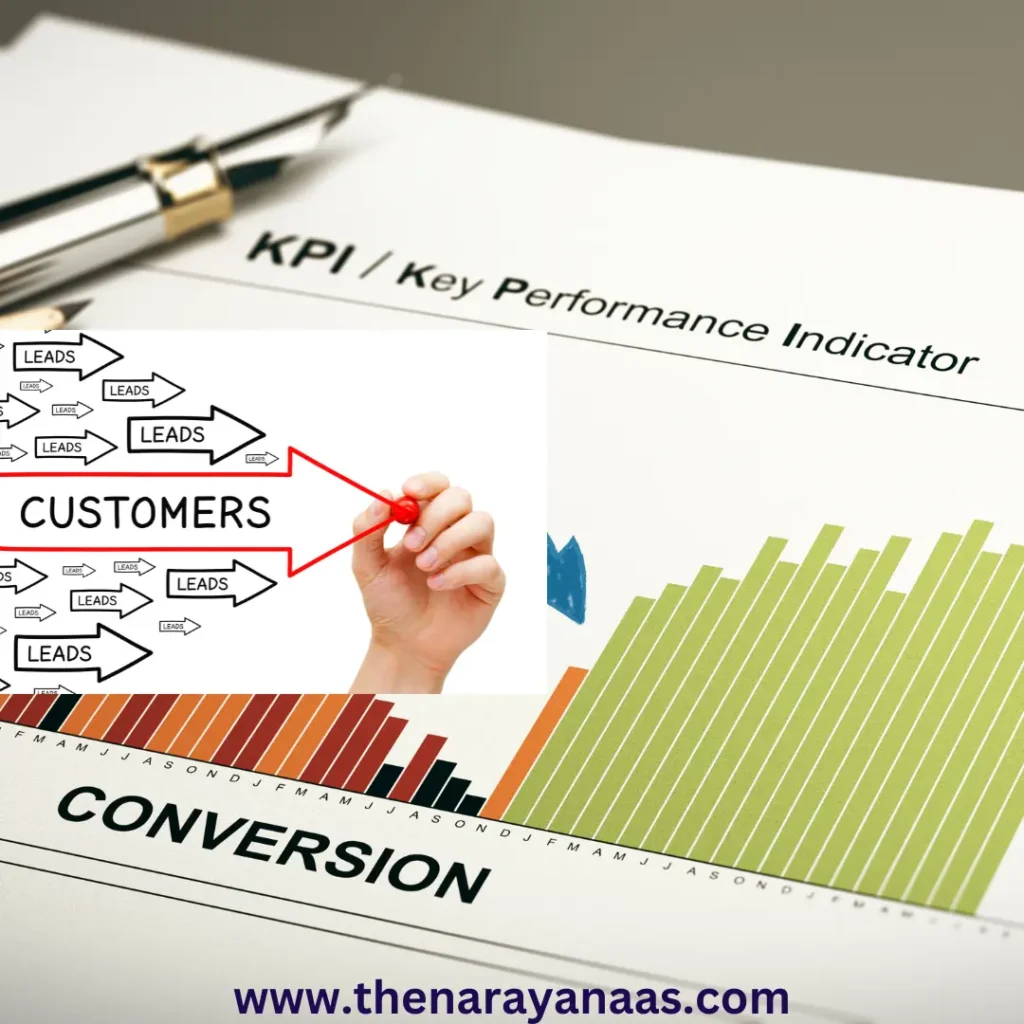Business-to-business (B2B) organizations are depending more and more on digital marketing in the quickly changing business environment of today to spur growth, produce leads, and turn those leads into devoted clients. B2B marketing differs from B2C (business-to-consumer) marketing in that it entails lengthier sales cycles, intricate decision-making procedures, and a stronger focus on developing relationships. This blog explores the nuances of B2B digital marketing and provides useful advice for efficient lead generation and conversion.

1. Recognizing The Landscape Of B2B Digital Marketing
B2B digital marketing differs from B2C marketing because of the type of goods and services that are being offered. Higher prices, longer sales cycles, and more decision-makers are common in B2B transactions. As a result, the marketing techniques used need to take these special characteristics into account.
- Longer Sales Cycles: Depending on the product or service, B2B sales cycles can last anywhere from a few months to more than a year. This calls for a persistent marketing campaign in which creating leads is just as crucial as nurturing them.
- Multiple Decision-Makers: In business-to-business transactions, buying decisions are seldom made by a lone person. As a result, marketing strategies need to take into account the wants and needs of different stakeholders inside a firm.
- Complex Products and Services: B2B products can involve intricate details that call for demonstrations and in-depth explanations. In order to effectively guide prospective consumers through the buyer’s journey, educational content is essential.
2. Developing An Effective B2B Digital Marketing Plan
In order to achieve success in B2B digital marketing, organizations must have a clear plan that complements their objectives. Here’s how to develop a strong strategy step-by-step:

A. Identify Who Your Target Market Is
A deep comprehension of your target market is the cornerstone of any successful marketing approach. This entails determining the precise businesses, industries, and decision-makers you wish to contact in B2B marketing.
- Make Buyer Personas: Construct thorough buyer personas that accurately reflect your ideal clients. These have to contain details on their objectives, pain spots, employment responsibilities, and shopping habits.
- Divide Up Your Audience: Leads are not all made equal. Divide up your audience into segments according to things like industry, size of firm, and stage of the purchasing process. This makes it possible for more efficient and customized marketing.
B. Establish Explicit KPIs And Goals
Setting attainable objectives is crucial to monitoring the effectiveness of your online marketing campaigns.
- Lead Generation Goals: Establish your lead generation goals and how many leads you want to produce in a given amount of time. When assessing your campaigns, use this as a reference point.
- Goals for Conversion Rates: Establish goals for turning leads into paying clients. This could be expressed as a number of closed deals or as particular percentages.
- Goals for Customer Retention: Keeping current customers is just as vital as acquiring new ones. Establish objectives for upselling and customer retention.
C. Create A Plan For Content Marketing
The foundation of B2B digital marketing is content. It keeps leads informed, educated, and well-cared for during the sales cycle.
- Educational Content: Produce material that speaks to the problems and difficulties that your intended audience faces. Whitepapers, webinars, case studies, and blog entries can all fall under this category.
- SEO Optimization: Ensure that your content has been optimized using SEO to make it more visible to search engines. To raise your search engine ranks, make use of meta tags, high-quality backlinks, and pertinent keywords.
- Content Distribution: Make use of a variety of platforms to share your content, such as industry-specific forums, email marketing, and social media.
3. Useful Lead Generation Strategies
The process of drawing in and turning strangers into prospective clients is known as lead generation. The following are some tried-and-true methods for producing top-notch B2B leads:

A. SEO, or Search Engine Optimization
Using SEO to increase organic traffic to your website is a wise move. Search engine-friendly content and your website can draw in prospective prospects who are actively looking for solutions in your sector.
- Keyword Research: Determine which high-intent terms your target audience is most likely to look for and target them. Focus on long-tail keywords that are specific to your company and line of goods.
- On-Page Optimization: Optimize the on-page components of your website, such as the headers, content, title tags, and meta descriptions. Ensure that your website is mobile-friendly and loads swiftly.
- Top-notch material Creation: Generate pertinent, high-quality material that speaks to your target audience’s demands. This raises your brand’s search engine ranks and positions it as a thinking leader.
B. Advertising Using Pay-Per-Click (PPC)
With pay-per-click (PPC) advertising, you may swiftly reach a specific audience by placing an ad in search engine results and bidding on relevant keywords.
- Google Ads: Make targeted campaigns with Google Ads that show up when people look for particular keywords. To get the most out of your campaigns and optimize ROI, monitor them often.
- LinkedIn Ads: LinkedIn is a strong B2B marketing platform. To target particular industries, job titles, and organization sizes, use LinkedIn Ads. InMail and sponsored content are two efficient ad types for generating leads.
- Remarketing: To re-engage users who have already interacted with your website, run remarketing campaigns. This motivates potential leads to take the next action and keeps your business at the forefront of their minds.
C. Promotion Of Content
One of the main components of B2B lead creation is content marketing. You can draw in, hold the attention of, and convert leads by producing and sharing quality content.
- Lead Magnets: Provide useful materials like templates, whitepapers, and eBooks in return for contact details. This aids in compiling a list of possible leads.
- Online Events and Webinars: Organize webinars and other online gatherings that offer comprehensive insights into market trends, obstacles, and solutions. These gatherings work well for generating leads and establishing your company as a leader in the field.
- Testimonials and Case Studies: Use case studies and client endorsements to highlight your business’s achievements. With potential leads, this increases credibility and confidence.
D. Marketing Via Social Media
Social media platforms are a great way to establish and maintain relationships with potential leads.
- LinkedIn Networking: The best B2B networking site is LinkedIn. To increase the visibility of your business, network with relevant industry groups, contribute to conversations, and publish insightful material.
- Material Sharing: To expand the audience for your material, share it on social media. To spread the word, use pertinent hashtags and mention influential people in the field.
- Social Selling: Use social selling strategies to establish a more intimate connection with prospective customers. To find and interact with decision-makers at your target companies, use LinkedIn Sales Navigator.
4. Conversion Techniques: Converting Prospects into Buyers
Converting leads into paying customers is the next stage, and generating leads is just half the battle. The following are some methods to raise your conversion rates:

A. Take The Lead In Nurturing
Developing a relationship with potential clients through regular, tailored communication is known as lead nurturing. Given the lengthier and more intricate sales cycle in business-to-business marketing, this is particularly crucial.
- Email Marketing: Send leads useful material and remain in touch with them with email marketing. Deliver customized communications by segmenting your email list according to the interests and behavior of your leads.
- Marketing Automation: To improve the efficiency of your lead nurturing campaigns, use marketing automation technologies. You may track lead interactions, send customized emails, and assign engagement scores to leads with automation.
- Personalized Content: Adapt your writing to each lead’s unique requirements and areas of discomfort. To make the experience more relevant, use tailored landing pages and dynamic content.
B. Aligning Sales And Marketing
Improving lead conversion rates requires coordinating your marketing and sales departments. To find high-quality prospects and advance them through the sales funnel, both teams should collaborate.
- Lead Scoring: Set up a method to rank leads according to how likely they are to convert. This allows sales teams to focus on the most promising leads.
- Regular Communication: Encourage frequent contact between the marketing and sales teams to make sure that their objectives, messages, and tactics are in line.
- Feedback Loop: Establish a feedback loop in which sales teams share information about lead quality and conversion rates. This enables marketing teams to enhance lead generating initiatives and hone their strategy.
C. Optimization Of Conversion Rate (CRO)
Optimizing your website and landing pages for conversion rate optimization (CRO) increases the proportion of visitors that complete a desired activity, like submitting a form or completing a purchase.
- Clear Call-to-Actions (CTAs): Make sure your website has CTAs that are easy to understand, appealing, and easily accessible. Make use of language that is action-oriented to entice visitors to proceed.
- Designing Landing Pages: Create landing pages that are clear, concise, and easy to use. To establish trust, include social proof in the form of case studies and testimonials.
- A/B Evaluation: To find out which components of your website and landing pages work best, run A/B tests. To determine which combinations of headlines, CTAs, pictures, and layouts work best, test them all.
D. Advertising And Marketing Retargeting
Remarketing and retargeting are useful techniques for reconnecting with leads who have expressed interest in your products but have not yet made a purchase.
- Display Advertisements: Target website visitors who have already visited by using display advertisements. These advertisements ought to have a compelling call to action and a pleasing look.
- Email Remarketing: Target leads who have interacted with your content but have not yet taken action by sending them customized emails. Incorporate incentives, discounts, or offers that are pertinent to promote conversion.
- Dynamic Retargeting: Use dynamic retargeting to display tailored advertisements to leads depending on the goods or services they have browsed on your website. As a result, the experience is more convincing and customized.
5. Assessing Achievement and Ongoing Enhancement
Your B2B digital marketing initiatives must be successful, so you must constantly assess performance and make data-driven adjustments.

A. Important Metrics
- Monitoring Lead Generation Metrics: Keep tabs on the quantity, quality, and cost of the leads you create. This aids in evaluating the success of your lead creation tactics.
- Conversion Metrics: Monitor important conversion indicators like average time to conversion, customer acquisition cost (CAC), and conversion rate (% of leads that become customers). These metrics give you information about how well your conversion methods are working and how effective your sales funnel is.
- Value of a Customer Over Time (CLTV): Compute CLTV to gain insight into your clients’ long-term worth. This number informs your marketing campaign budgeting and helps you figure out how much you can afford to spend on bringing on new clients.
- Metrics for Engagement: Track metrics related to engagement, like click-through rates (CTR), social media engagements, and email open rates. A high level of engagement usually means that your audience is connecting with your content, which can result in increased conversion rates.
- Return on Investment (ROI): Calculate the ROI to see how profitable your digital marketing initiatives are. This involves evaluating each campaign’s income in relation to its outlay of funds.
B. Measurement Tools And Technologies
Using the appropriate tools and technology is crucial for tracking and analyzing your digital marketing performance. The following tools are suggested:
- Google Analytics: An all-inclusive tool that offers thorough insights into user behavior, website traffic, and conversion funnels. Understanding how users engage with your website and which channels are generating the most conversions requires the use of Google Analytics.
- CRM Systems: You may monitor and evaluate customer interactions at every stage of the buyer’s journey with the use of Customer Relationship Management (CRM) systems such as Salesforce, HubSpot, or ZOHO CRM. They are essential for managing sales pipelines, keeping track of lead status, and preserving a single view of customer information.
- Marketing Automation Platforms: You can segment audiences, track interaction, and automate email campaigns with tools like Mailchimp, Pardot, and Marketo. These systems can offer a smooth lead nurturing experience by integrating with your CRM as well.
- Heatmaps and A/B testing tools: You can see how users interact with your website by using heatmaps and session records provided by tools like Crazy Egg or Hotjar. You may test many iterations of your landing pages or call to action (CTAs) to determine which ones work best by using A/B testing tools such as Optimizely or VWO.
C. Ongoing Enhancement Via Data-Driven Understandings
Maintaining competitiveness in B2B digital marketing requires constant improvement. You may improve lead generation and conversion rates by honing your strategy through data analysis and insight-based decision-making.
- Frequent Audits: Evaluate all aspects of your digital marketing strategy on a frequent basis, including social media, PPC, SEO, and content. Determine your strengths and weaknesses and modify your approach based on evidence.
- Customer Feedback: Find out what your customers think of your brand by asking them for feedback. Reviews, interviews, and surveys can be used for this. Make use of this input to pinpoint areas in which your sales or marketing procedures need to be enhanced.
- Analyzing Your Competitors: Pay special attention to what your rivals are doing with digital marketing. Examine their PPC ads, social media presence, content, and keywords. Knowing what makes your rivals successful can give you insightful information and point out areas where your own plan is lacking.
- Adjust for Market Trends: Keep abreast on the most recent developments and trends in the field of B2B marketing. Being proactive and adaptive will ensure that your initiatives remain successful and relevant in the face of evolving technology such as AI and machine learning, as well as changes in Google’s algorithm or the introduction of new social media platforms.
6. Cutting Edge Techniques for Successful B2B Digital Marketing
Think about adding some cutting-edge techniques to your lead generation and conversion plans as you work to improve them. These will give your B2B marketing campaigns a competitive advantage.
A. Marketing That Is Account-Based (ABM)
Instead of aiming widely, account-based marketing is a highly focused strategy that concentrates on locating and interacting with high-value accounts. In B2B marketing, where targeted outreach can greatly increase conversion rates, ABM is very successful.
- Identify Target Accounts: Assist your sales staff in creating a list of high-value target accounts. These need to be the businesses with the best chance of becoming dependable clients.
- Tailored Marketing Initiatives: Create marketing programs that are incredibly tailored to each target account. This might involve direct mail, tailored email marketing, and even original content. Addressing each account’s unique needs and pain areas is the aim.
- Alignment with Sales: To effectively use ABM, your marketing and sales teams must work closely together. Make sure that both teams are collaborating to nurture and convert target accounts, using common objectives and performance indicators.
B. B2B Influencer Marketing
Influencer marketing is more frequently linked to business-to-consumer (B2C) campaigns, although it can also be an effective B2B marketing tactic. You may increase your visibility, get more leads, and establish trust by collaborating with influential people in the field.
- Find Industry Influencers: Within your specialty, seek out prominent people, industry experts, and thought leaders. These could be people that write reputable information in your sector, speak frequently at industry events, or have a sizable LinkedIn following.
- Collaborative Content: Produce valuable content for your audience by collaborating with influencers. Co-authored blog articles, podcasts, webinars, and interviews may fall under this category. Influencer recommendations can increase your brand’s legitimacy and draw in more customers.
- Utilize Influencer Networks: Within your target industry, influencers frequently have established networks. You can access these networks and connect with potential leads who might not be aware of your brand by collaborating with them.
C. Webinars And Video Marketing
A dynamic means of engaging prospects and communicating complex information, video marketing has grown in importance as a tool in business-to-business (B2B) marketing.
- Product Tutorials and Demos: Use videos to show off your goods and services in action. This works especially well for complicated B2B solutions, where the value proposition can be better understood with a visual demonstration.
- Client References: Make video testimonies from happy clients. These can be effective strategies for establishing credibility and trust with prospective customers.
- Web Conferences: Organize webinars on subjects related to your sector. Webinars give you the chance to demonstrate your skills, interact in real time with your audience, and collect leads via registration forms.
7. Overcoming Typical B2B Digital Marketing Obstacles
Digital marketing presents B2B marketers with a number of opportunities as well as obstacles.

A. Extended Sales Cycles
In B2B marketing, one of the biggest obstacles is handling lengthy sales cycles. It’s important to be persistent and patient, but it’s also important to keep up regular contact with leads over time.
- Lead Nurturing: Use effective lead nurturing techniques to maintain brand awareness over the course of the prolonged sales cycle. Maintaining engagement and advancing leads toward conversion is facilitated by consistent, tailored communication.
- Content Strategy: Arrange your material so that it supports the customer throughout the entire process. This guarantees that leads, as they move through the decision-making process, have access to pertinent information.
B. Many People Who Make Decisions
It could be difficult to meet the demands and concerns of every decision-maker when there are numerous parties involved in B2B purchasing choices.
- Customized Communication: Create customized communication that addresses the particular issues raised by every stakeholder. For instance, the IT director may be more concerned with integration and security, whereas the CFO may be more concerned with ROI.
- Multi-Channel Approach: Use a multi-channel strategy to get in touch with various decision-makers. Some people might communicate better via email, while others might use social media or webinars more frequently.
C. Financial Limitations
Campaigns for B2B marketing might require a lot of resources, particularly if they are aimed at high-value customers or involve a lot of content marketing.
- Optimize Spending: Allocate funds to the most productive channels and tactics. Determine which campaigns are yielding the best return on investment (ROI) using data and analytics, then reallocate resources appropriately.
- Leverage Organic Channels: Make Use of Organic Channels Make the most of natural channels like social media, content marketing, and SEO. Without the need for substantial advertising expenditures, these channels can generate a lot of traffic and leads.
8. Concluding Remarks: B2B Digital Marketing’s Future
To stay competitive, B2B organizations need to keep up with the continuously changing world of digital marketing. Observe the following trends:
- Artificial Intelligence (AI) and Machine Learning: By enabling more advanced targeting, personalization, and predictive analytics, AI and machine learning are revolutionizing B2B marketing. These technological advancements will keep becoming more significant in enhancing lead conversion rates and marketing campaign optimization.
- Data Privacy and Compliance: B2B organizations need to make sure that their marketing strategies abide by legislation like the CCPA and GDPR as data privacy rules become more stringent. The importance of transparency and moral data use will only grow.
- Personalization at Scale: Personalized experiences will always be in demand. Businesses in the B2B space will need to figure out how to use automation and sophisticated analytics to provide individualized interactions and content at scale.
In summary
B2B digital marketing is a dynamic and complex area that needs a planned approach in order to attract leads and turn them into devoted clients. You may create a successful digital marketing campaign that spurs growth and yields quantifiable outcomes by comprehending the particular difficulties faced by B2B marketers, utilizing the appropriate tools and technology, and iteratively improving your tactics.
The advice provided in this blog can be quite helpful, whether you’re new to B2B digital marketing or trying to maximize your current endeavors. If you continue to be flexible, data-driven, and customer-focused, you should have no trouble reaching your marketing objectives.
What is the most effective digital marketing strategy for B2B lead generation?
Combining many methods is frequently the most successful digital marketing strategy for generating B2B leads. Content marketing plays a critical role in attracting and nurturing leads by addressing their pain areas and offering valuable solutions. Of particular importance is the provision of educational and industry-specific content. Search Engine Optimization (SEO) is another important factor that drives organic traffic, and Pay-Per-Click (PPC) advertising is a fast way to get targeted leads, particularly on sites like LinkedIn and Google Ads. It’s crucial to combine these tactics with a strong lead nurturing program in order to optimize efficacy. Email marketing and marketing automation solutions can be used to help leads go through the sales funnel.
How can B2B companies improve their conversion rates after generating leads?
A comprehensive approach that incorporates lead nurturing, sales and marketing alignment, and conversion rate optimization (CRO) is necessary to increase conversion rates in B2B marketing. Maintaining regular, individualized contact with leads via email marketing and material suited to their stage of the buyer’s journey is known as lead nurturing. When sales and marketing teams are in sync, they may work together to achieve shared objectives, share metrics, and provide regular feedback to each other so that tactics can be improved. Furthermore, employing persuasive content, A/B testing, and obvious calls-to-action (CTAs) on your website and landing pages can optimize them and greatly increase the likelihood that leads will become paying customers. Retargeting leads who have not yet converted can be re-engaged by implementing retargeting campaigns, which will keep your brand in front of them and motivate them to take the next action.


[…] world of traditional commerce has changed in recent years due to the rise of (Business-to-Business) B2B eCommerce platform. These platforms have produced a smooth, digital marketplace where companies may trade goods and […]